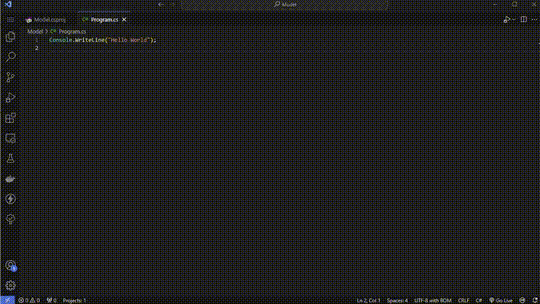- Operations Research (OR) Scientist / Practitioner (wiki)
- Middle East Technical University & Singapore University of Technology and Design
- Located in Bonn Germany, working at DHL
- | github | email | linkedin | cv | crates | nuget |
All things OR, optimization, networks, routing, algorithms, multi objective decision making.
Programming, algorithms, data structures, speed, efficiency and recently concurrency.
Also love programming languages:
- rust 🤟 every day, to stay for a long time
- c#, react, typescript 👍 quiet often
- go, f# 👌🏽 zig, nim 🤔 watching closely
An expressive, efficient and productive mathematical programming / modeling crate for rust.
- macro-free and concise api which does not require more lines than model-on-paper has
- concise, simple, solver agnostic, immutable, type safe
- with a separation of model and data, and hence, enable abstraction over inputs
- with reusable & composable model components
- below is a demo of my attempt in C# and here is the documentation
Working more and more on concurrent programming and parallel processing in rust. One thing lead to another, and I got more and more interested:
- First, worked on defining the PinnedVec trait and its implementations such as the SplitVec and FixedVec. A pinned vector is nothing but a vector which keeps its elements pinned in their memory locations.
- Turns out this feature is very useful in defining concurrent collections such as ConcurrentBag, ConcurrentVec or ConcurrentOrderedBag. This allows to write outputs of a computation concurrently.
- Then, the missing piece is to provide inputs concurrently with the convenience of an iterator. And hence, the ConcurrentIter.
- Having concurrent readers and concurrent writers, we can have a very simple yet very performant parallel iterator Par.
Working on convenient and efficient self referential collections.
- Such collections are common building blocks of data structures used in many algorithms, but they are tricky to build in rust, certainly trickier than garbage collected languages.
- The goal is to define how to create such collections safely and efficiently in rust.
- Again the PinnedVec serves as the starting point since we want our references to stay valid.
- Second goal is to define and provide core functionalities of such collections. SelfRefCol aims to serve as the core structure for self referential collection.
- As the first consumer, worked on building the famously tricky LinkedList on top of SelfRefCol, which turned out to be very efficient.
- Efficient & flexible trees 🌴 and graphs are in progress. To continue with graphs.
- working on efficient data structures as I need in algorithms, such as PriorityQueue trait and efficient d-ary heap implementations.
- and whenever I have time, I am trying some experimental ideas such as Closure and FunVec.


